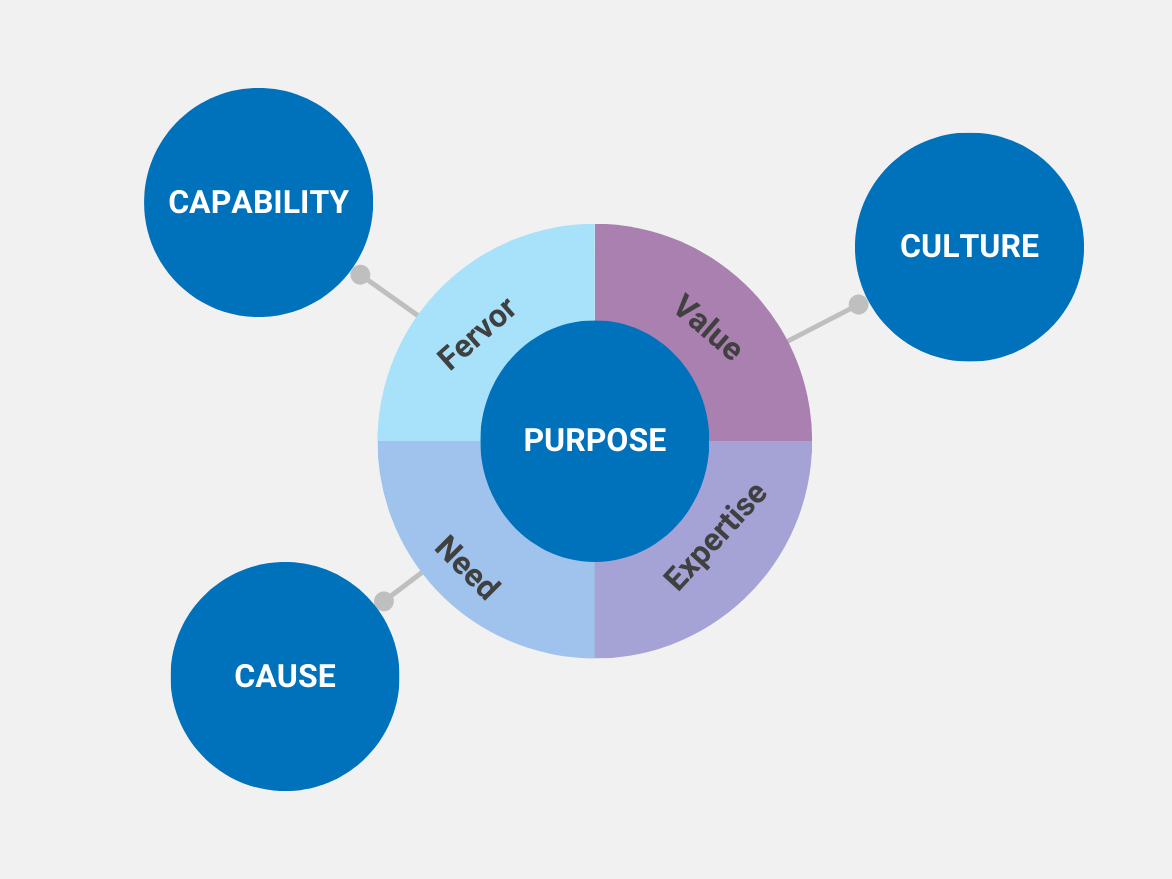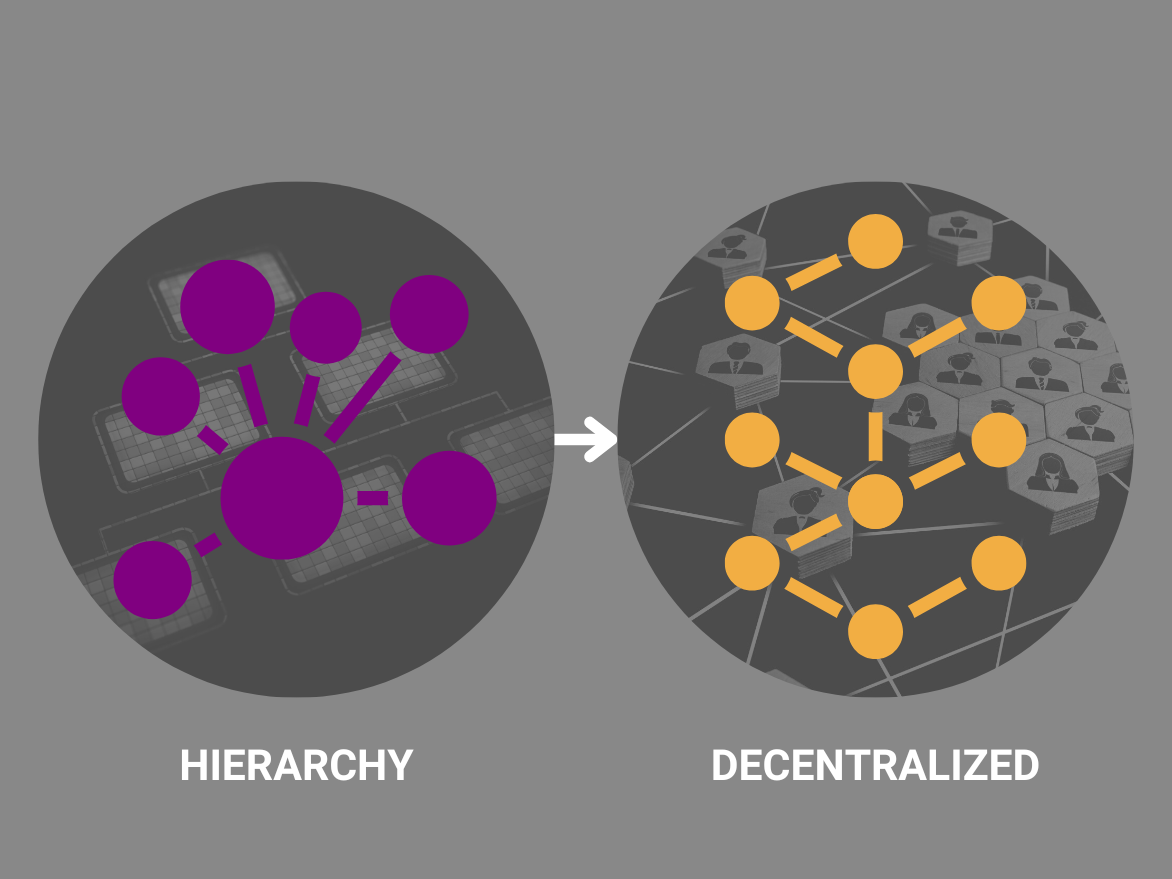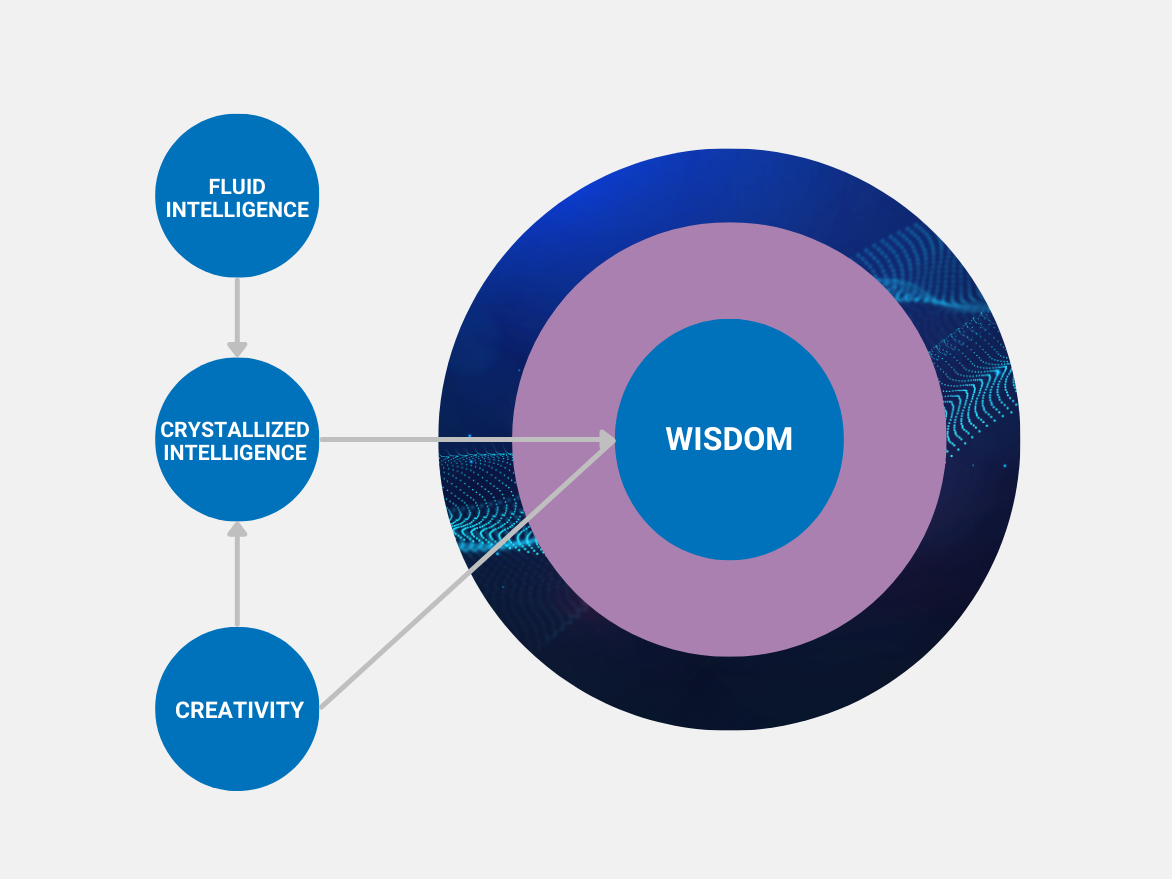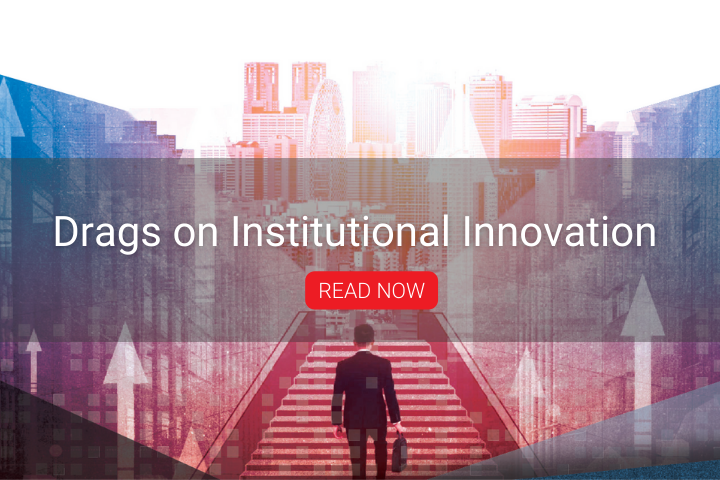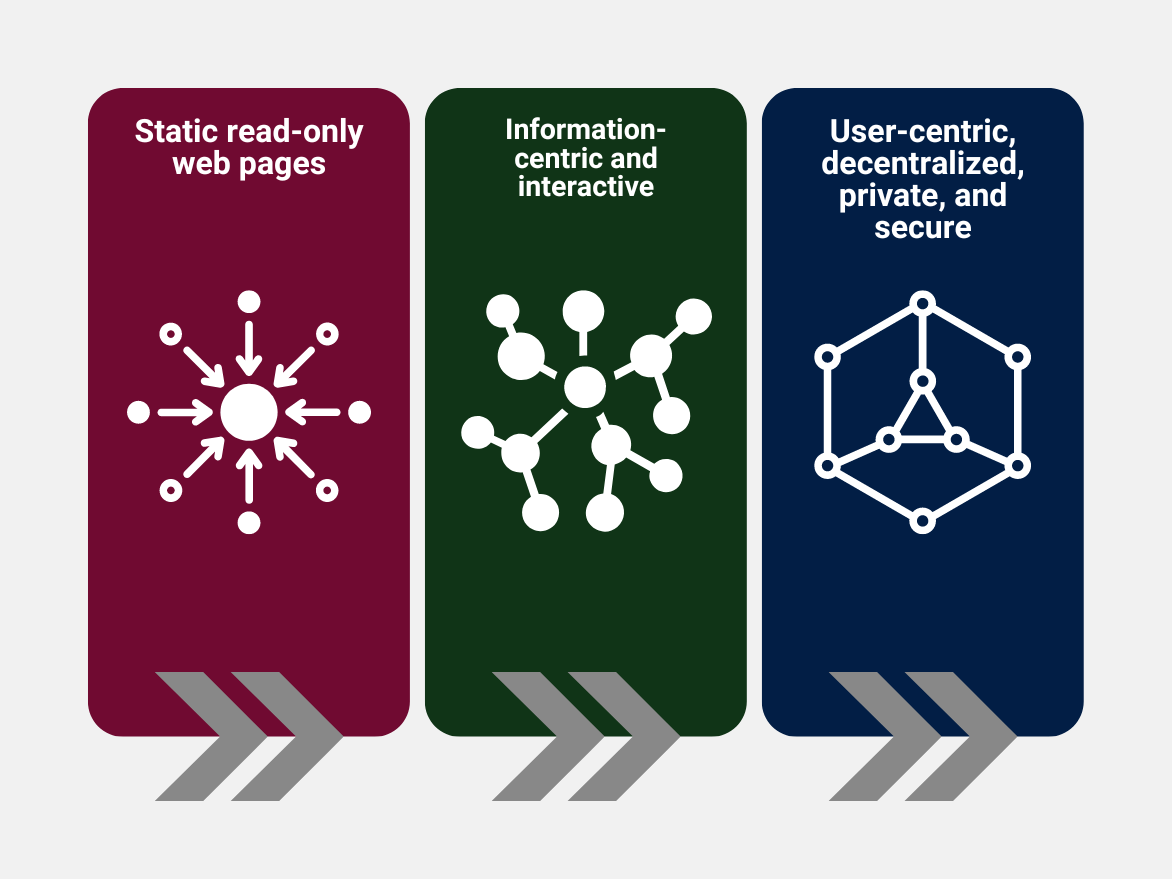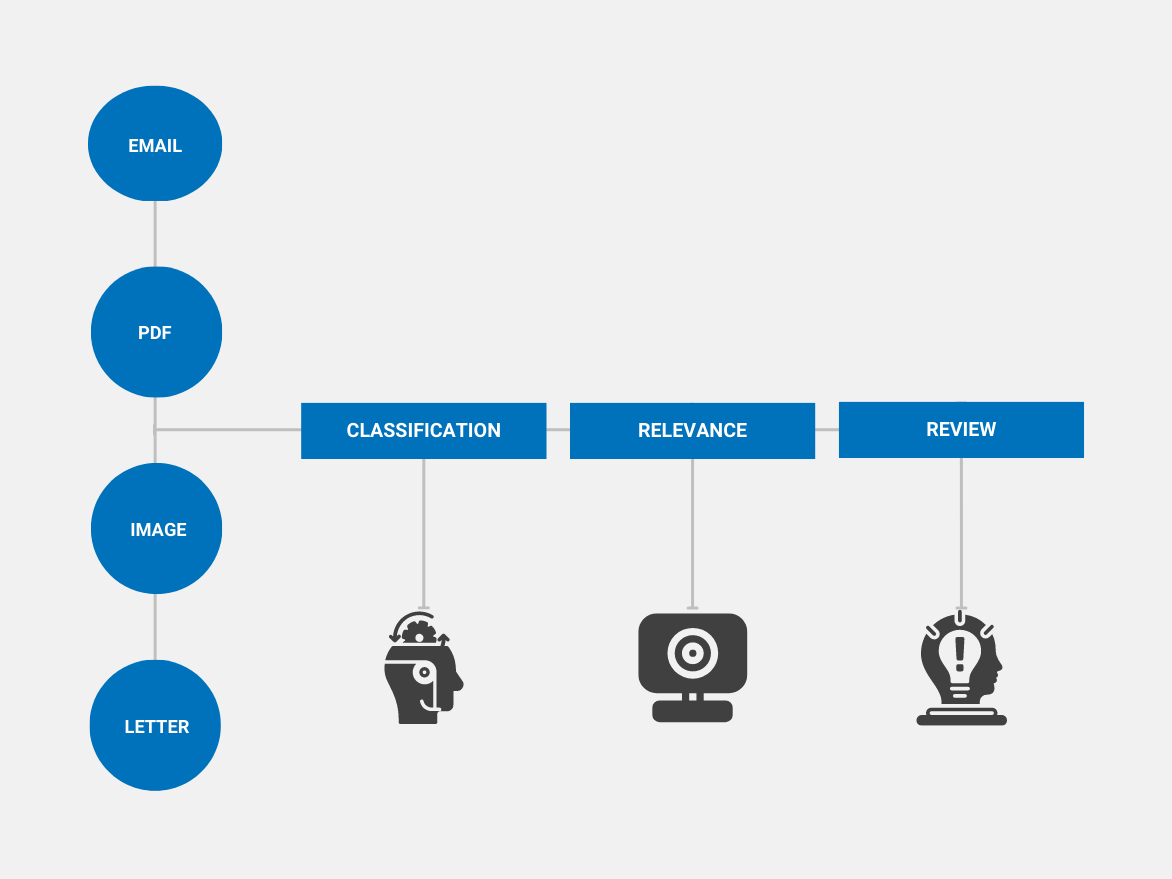
Table of Contents
- Introduction
- Purpose-Driven Business Modeling
- Decentralized, Autonomous and Anytime Work
- Promoting Wisdom and Learning
- Finding Me on My Terms
- Conversant, Human-like and 3D Assistance
- Transparent, User-controlled and Democratic Tasking
- Guiding Workers to New Value Creation
- Seamlessly Transcending the Analog and Digital Environment
- Overcoming Organizational Fragmentation
- Enabling Connectivity and Ubiquitious Communication
- Summary
- References
Introduction
The coming year will see us move confidently into the hyper-personalized, intelligent, interactive and inspiring avenues that will model our new dynamic workplace. This will be achieved by architecting the open enterprise ecologies, horizontal and digitally enabled work processes and intelligent worker experiences needed in a maturing post-COVID business-digital transformation world.
We already know that this economy will be increasingly driven by intangibles – ideas, brand, knowledge, relationships and imagination, while new value creation will be made possible by the ingenuity of people, aligned in a clear narrative that mirrors the organization’s overarching reason for existence.
One certainty is that our analog-digital ecosystems are primed for new work in 2023. Progressive capabilities – particularly AI and machine learning, and including Web3 concepts – will be used extensively in everyday work situations.
In short, 2023 promises to be a technological leap year, as Fourth Industrial Revolution solutions allied to AI and organizational change issues really gain traction in the mainstream.
Here are some of the major tipping points we anticipate over the coming twelve months:
- Generative AI will flourish, with advanced chatbots like ChatGPT (Generative Pre-Trained Transformer) providing descriptions, answers and solutions to complex questions including ways to write code, and solve layout problems and optimize queries.
- Industrialized machine learning will move from pilots into production scale for real-world business use.
- Digital-ownership rights will be protected, providing users with greater control of their data and catalyzing new business models.
- AI-enabled development and testing, and low-code or no-code platforms will aid in the development of software applications, improving processes and software quality.
- Converging biological and information technologies will improve well-being and human performance, transform value chains, and create innovative products and services.
- Next generation digital assistants will provide ambient experiences triggered by voice, gesture or glance.
- Neural interfaces that afford direct communication between biological thought and digital response will continue to evolve.
- AI will move towards versatile systems that can learn and imitate a collection of previously unique human behaviors.
- The cloud will facilitate new technologies and platforms rooted in cryptographically secure systems.
- Digital content will continue to be woven seamlessly into physical spaces and become indistinguishable from shared personal and professional experiences.
In tandem with these developments on the technological frontier will be a renewed focus on delivering an exceptional employee experience. One thing is clear – worker engagement and inspiration will necessarily be front and center on all business leaders’ agendas.
In this white paper, we define ten experiences that we believe will inspire the workforce over the next twelve months, even as we redesign our organizations and define the human work needed to be ready for the new cognitive economy.
Purpose-Driven Business Modeling
In 2023, digital age business models will be necessarily purpose-driven and human-centric. While the corporate narrative will unite brand, culture and business strategy into a coherent and powerful story, purpose will clearly define the reason for the company’s existence, the fervor this generates, the need it fulfills, and the new value, social good, and intent that the business is creating for workers, communities, society, and/or the environment.
Digital advances will continue to enable workers to pursue ever more gratifying and purposeful work. Ideally, this work will be aligned not only with the business vision, but also be deeply ingrained with the day-to-day operation and underlying ethic of the entire ecosystem. In this way, the organizational purpose then becomes the driver of digital transformation, rather than the converse.
Figure 1. Components of Purpose
To avoid both a loss of productivity and potential worker attrition, companies must strive for uniformity of purpose across all transformation initiatives, while at the same time understanding the impact of all these on worker morale and consequent adoption driven by specific coaching and training programs. Pinpointing exactly where a sense of purpose is needed most in any transformation effort is essential, but never more so than in a business world that is being turned upside down by the unlimited capacity of digitally-driven technologies to change models that have persisted for over a century.
With employee fulfillment as the overarching goal, capabilities that help finding and contributing to an individual’s purpose in the context of the company’s purpose means that the worker realizes their true potential through inspiring experiences with ‘moments that matter’. These moments that matter are not only imbued with a deep sense of purpose, but also promote ownership, durable network building, attainment of intrinsic trust and credibility, and clear recognition for a job well done.
Decentralized, Autonomous and Anytime Work
The movement towards decentralized, autonomous and anytime work will dovetail with the evolution of the metaverse and Web3, and consequently impact our ability to meet, learn, socialize, play, trade and transact in fully immersive virtual environments. This will further accentuate the need for centralized office locations to become collaboration spaces for the purposes of knowledge transfer and organizational innovation.
While these implications are profound when we look at today’s entrenched organizational hierarchies, there is also a growing belief that Decentralized Autonomous Organizations (DAOs), which operate on public blockchains, will gain greater traction in 2023. These are a completely new way to imagine how businesses and human labour get organized.
Figure 2. From Hierarchy to Decentralized Autonomy
In simple terms, a DAO is an internet native, blockchain-governed, collectively owned organization working towards a shared mission. It is based on a set of rules and coded as a computer program driven by smart contracts. The rules and code are transparent and controlled by every relevant member of the organization. These members act as peers in a fully functional automated organization – one that has no need for traditional hierarchical management. Instead, decisions are made by consensus of the group members and tasks are completed through collaborative endeavors whereby work flows to talent, rather than being allocated.
Even as decentralized and autonomous work continues to flourish, companies will develop processes and tools for monitoring remote employee output and standards, albeit without infringing on privacy or personal freedoms.
Anticipating future talent needs will also be at the epicenter of a future of work strategy to embrace anytime work, while offsetting rarified skills, scarce talent, high turnover and a shift in the employee-employer dynamic.
Promoting Wisdom and Learning
It’s been seventeen years since Senge popularized the term “learning organization” in his book The Fifth Discipline: The Art & Practice of The Learning Organization. In it, Senge described companies that promoted the continuous, lifelong learning of their employees. Such an organization would provide opportunities and incentives for knowledge sharing among team members.
A half-century earlier, Peter Drucker had coined the term “knowledge worker”. He believed that the people who knew how to bring relevant information and data to their decision-making were going to be the most influential individuals on the planet.
Figure 3. Leveraging Intelligence and Creativity
Today, organizations continue to embrace the idea of developing iterative lifelong learning processes, knowledge work, experimentation, and the building of new conceptual and physical models as part of digital transformation in an effort to achieve not only operational excellence, but also to leverage imaginative ideas on innovation.
In 2023, we believe organizations will demonstrate a deeper understanding of the changing nature of customer and worker expectations in a cognitive economy enabled by machines and algorithms. As AI and machine learning continue to expand and usurp more complex tasks, we will see a drive for not just ‘learning’ and ‘knowledge’, but also that of wisdom come to prominence in progressive Fourth Industrial Revolution companies.
Companies that promote wisdom and learning are essentially adding “crystallized intelligence” – acquired knowledge that stems from learned knowledge and skills – to the everyday work equation. At a basic level, this could be defined as using everything we’ve ever learnt, our cultural influences, life experiences, and our comprehension of the world in order to make wise decisions.
Crystallized intelligence, as described by Arthur Brooks in his 2022 book From Strength to Strength, is fed by our natural creativity and acts as the counterpoint to fluid intelligence, which allows humans to identify complex relationships. The outcome is defined as wisdom – a form of knowledge, understanding, insight, and reflective thinking – a compilation of individual views and individual interests that considers the interests and welfare of others.
This leads to the kind of holistic and systemic problem-solving that is crucial when we talk about human-machine collaboration. Instead of competing for a limited supply of talent, organizations will promote both wisdom and learning through skill-building, tapping creative sources of talent, and providing a compelling talent experience.
Finding Me on My Terms
The employee experience in 2023 will embrace findability by using AI and Machine Learning to predict what workers want or need to know at any given time, then by conveying targeted information to them via an appropriate channel.
Experiences will also find workers based on their unique job or role, prior demonstrated behaviors, and known work practices and processes, as well as their personal preferences. This experience will act appropriately on a worker’s behalf with full transparency and prior approval. In this way, advanced technology will always be of service to the worker rather than the converse.
One of the most common issues we find in organizations today is worker resistance to new technology. This is most often caused by several factors, including a lack of confidence in the integrity of the solution, failure to specify the individualized benefits and optimal usage of the tool, exclusion from the decision-making process, and feeling threatened by the technology or suspicious of its intent. These issues often stem from a lack of communication prior to deployment.
Notwithstanding the need for greater management involvement up front, the next wave of digital technology has the potential and power to allay these issues and find workers on their own terms without getting too far ahead of their ability to use the solution. Essentially, the next wave of smart technology and humans who use it will not compete with one another; but rather complement each other’s capabilities.
This is the type of automation that can enhance the experience of work. Rather than doing the same work faster and with fewer people, it will create an opportunity to redesign jobs and reengineer workflows to enable people to focus on the parts of work that human workers are particularly well-suited for, including relationship building, intuitive decision making, empathy, and problem solving.
It requires informed, careful, strategic thought to ensure the technology is used to ‘find’ workers at the appropriate time, while enabling people to do the kinds of relational, empathetic, problem-solving activities humans do best. By identifying key pain points in order to determine the right use cases and determine exactly what tasks and decision-making people will retain and what tasks will trigger automated responses or helpful information when the system is implemented, organizations can be sure that the technology is designed to be an essential productivity tool.
Conversant, Human-like and 3D Assistance
In 2023, new experiences and modes of interaction will inspire the workforce with generative AI, advanced natural language processing, and realistic 3D avatars.
The metaverse and other immersive virtual experiences will become valuable enterprise tools for new business models, training, and collaboration. These immersive-reality technologies will use sensing technologies and spatial computing to help users “see the world differently” through mixed or augmented reality or “see a different world” through virtual reality. Extended reality will bring immersive 3D universes where digital devices interact and engage in virtual experiences.
The rise of generative AI, which allows for the creation of original content by learning from massive and increasingly broad data sources, is really game-changer in the sphere of assistive technology. For example, creativity, once the exclusive domain of humans, is now being emulated to some degree by programs that can produce original content in response to queries, drawing from sources of previously mined data as well as day-to-day interactions with users. Notwithstanding obvious ethical challenges, this generative software is being trained on a materially increased amount of data that will expand exponentially over the coming twelve months, resulting in improved accuracy and knowledge depth. Consider that it is already capable of developing original content, writing flawless code, and hypothesizing on the reasons for unforeseen errors in production.
Coupled with generative AI, unprecedented advances in automation and natural language processing will make it possible to design cost-efficient digital experiences in which conversations with machines will increasingly replicate conversations with employees in-person. ‘Intent recognition’, or the ability to understand what the user wants, no matter how cryptic the request may be, will be augmented by voice optimized responses that display empathy or emotion. Machines will demonstrate an increasingly sophisticated ability to follow conversation history and translate, recall and memorize information over conversations.
Although not as evolved at this point, we can reliably predict that these AI-powered, ultra-realistic humanoid chatbots will begin to take shape as three-dimensional holographic entities in the not too distant future. 3D avatars, or ‘virtual humans’, are already appearing on retail websites and this trend will continue in 2023.
Transparent, User-controlled and Democratic Tasking
Following the organizational narrative, the design of new organizational operating models is long overdue and true progress will be needed in 2023 to morph our long-held, centrally controlled, industrial-age structures into the open architectures needed for business and people to thrive in the second half of this decade.
New systems will paint a clear picture of the centrality of people in these models and, in doing so, we’ll find important work context for employee experiences and the “how” of work.
Experiences will model an open, transparent, user-driven, peer-to-peer, and fluid work environment. The evolution of Web3 will blur the lines between physical and virtual environments, using a combination of advanced connectivity, edge computing and decentralized networks with open standards and protocols. It will be defined by open-source technology, utilizing blockchain technology to be trustless and permissionless, which in turn accentuates both user-control and transparency. In a DAO environment, users will democratically bid on tasks based on their skill profile.
Figure 4. The Evolution of the User Controlled Internet
Among features we will see in the future, given the current trajectory of Web3 development, are the following:
- Anonymous single-sign-on – allowing one username and authentication method across all websites and accounts, rather than individual logins for each location. This type of login would not require users to surrender control of any sensitive personal data.
- Specific systems, such as those used in DAOs (see section 2) will be established to democratize decision-making based on either the quality or volume of a user’s investment into a site or application.
Significant widespread development, consolidation and accessibility efforts are needed before transparent, user controlled and democratic tasking is realized organizationally, but technology will continue to move in that inspirational direction during 2023.
Guiding Workers to New Value Creation
During a time of rapid convergence of enabling technologies, customer desires and business ecosystems, rethinking the fundamentals of how a business creates and captures value at the individual worker level is an absolute priority. The Fourth Industrial Revolution has already impacted each of our lives in so far as to how we communicate, how we produce, consume and even how we identify ourselves. For this reason, it has become essential to understand why the work we do matters and what value it adds, especially in a world where automation and artificial intelligence is woven into every part of our lives.
In 2023, we believe organizations will seek to further align workers with the value that the company wishes to create by engaging them in new work design. Companies will model new behaviors to demonstrate what good looks like. The latitude and room to explore and learn will become a critical component of this process.
Value creation will become a key purpose of the employee experience, while speed, quality and value will supersede a prior focus on time, scope, and cost. Regardless of the business model, organizations that focus on being flexible and open can position themselves within a fluid ecosystem of value creation, while lowering costs and making more efficient use of automation.
In a broader sense, we see value creation within a business ecosystem resulting from horizontally aligned players cooperating across industry boundaries in order to harness rewards from that value. Once an organization’s capability to create value in a digital world is understood, it will be essential to focus on nurturing a workforce that possesses the ability to adapt quickly, is comfortable with change, is not afraid to take risks, is highly collaborative, and consists of critical, systems-based thinkers. We need to focus on ways of working in that context. Management must light the way by becoming ‘Talent Champions’ who focus on the capabilities that are needed in the future state as well as encouraging and rewarding aligned behaviors.
Seamlessly Transcending the Analog and Digital Environment
Even as digital continues to usurp many aspects of the analog business world, most organizations continue to use paper in their day-to-day operations. Indeed, analog data will most likely remain a core part of the operating model for the foreseeable future. As this creates inevitable gaps in data and knowledge management initiatives, a way to extract information and insights from both legacy documents and real time transactions is needed to both capture value and improve performance.
This is an area where advances in Machine Learning (ML) applications increasingly come into play. While Optical Character Recognition – which enables efficient data processing of hard copy – has existed for many years, far more powerful Intelligent Document Processing (IDP) applications are making impressive strides in bridging the gap between the digital and analog worlds. This combination of classification, extraction and validation not only digitizes analog documents, but also employs machine learning in order to interpret the content of those documents for downstream consumption, effectively reducing the number of repetitive tasks required to read documents and substantially eliminating human errors in the process.
Yet despite its impressive capabilities, IDP still relies on human intervention in order to function correctly. This includes platform configuration, algorithmic training, and output monitoring to ensure both accuracy and exception handling. However, this human-aided data processing and interpretation will evolve to become primarily automated and fully digital. This AI-driven document distilling will ultimately lead to paperless digital operations.
Figure 5. Analog to Digital Migration
Seamlessly transcending the analog and digital worlds is best evidenced today by the implementation of technologies that digitally enable employee interaction and collaboration, such as videoconferencing and filesharing. Advances in the customer-facing areas of ecommerce, mobile apps and natural language chatbots continue to make inroads towards a fully digital business environment.
Overcoming Organizational Fragmentation
An intensified focus on resilience will help to overcome organizational fragmentation. Consistent cross-connectivity and user experience will be achieved via open enterprise ecologies.
Companies begin life with a strong sense of purpose. Initial organizational structures are cohesively aligned and linked by processes aimed at combining efficacy, effectiveness, and efficiency. Over time, however, individual adaptation and ‘natural selection’ takes place. This results in the functionality of the organization being compromised in terms of the original design and an element of dysfunction results. This is the beginning of organizational fragmentation.
The consequences of this fragmentation typically include the formation of functional silos and sub-optimal business processes governing end-to-end work. For the people working within the organization, especially those involved in hybrid or remote work, this outcome can be detrimental to personal motivation, as well as in embracing the organizational narrative.
Horizontal and digitally enabled work processes will be key to facilitating dimensions of resilience that permeate the business model, day-to-day operations, technology, and financial well-being. To avoid fragmentation, business leaders will communicate the organizational purpose persuasively so others are inspired by this vision and committed to bringing it to life.
Agile responses to a rapidly changing competitive landscape will require dynamic and instantaneous collaboration where hybrid or remote workers will closely communicate in order to avoid organizational fragmentation.
Enabling Connectivity and Ubiquitous Communication
Work and job design will focus on connectivity and collaboration in an effort to reveal previously untapped human potential. Progressive organizations will promote connectivity and engagement while also fostering learning at all levels by actively supporting reskilling.
Employees who are new to the workforce need particular attention when it comes to establishing connectivity and ubiquitous communication. Remote or hybrid work has meant that these employees have had limited in-person exposure to organizational norms and this has compromised their ability to determine what are appropriate or effective ways to communicate in ‘normal’ working conditions.
Everyone’s social skills have eroded to some degree as a result of the pandemic. To some extent, organizations must redefine appropriate forms of conveyance and connectivity for the entire workforce. Business leaders must now consider how best to establish connections among employees across not only geographic, but also generational boundaries. This is driven primarily by the organizational narrative, a clear business purpose, respect for individuality, and a pervasive focus on an inspirational employee experience.
Ubiquitous communication does not mean that everyone should adhere to the same principles of connection with co-workers. This is where personal preference must be considered, rather than attempting to force employees to interact in a standard fashion. Instead, interactions may be guided by a clear understanding of organizational values and guidance on how workers can build strong communication channels intentionally, rather than by compulsion.
Those organizations that master the art of ubiquitous employee communications are most likely to succeed at the acquisition and retention of critical talent, as well as supporting all employees in a holistic manner, while also determining how best to collect and use employee data. These are the trend setters who will not just leverage leading edge technology for both in-office and remote connectivity, but also adopt future of work strategies for communications that inspire the workforce.
Summary
In this white paper, we have explored what we believe will be ten sources of inspiration for employees in 2023.
While the corporate narrative will continue to unite brand, culture and business strategy into a coherent and powerful story, purpose-driven business modeling will not only promote the discovery of worker potential, but also articulate sources of new value creation and drive transformation initiatives designed to unify the workforce. We will also see decentralized, autonomous and anytime work make further headway, while the promotion of wisdom and learning will define the cognitive economy and lead to both holistic and systemic problem-solving practices within the working community.
Finding workers on their own terms, and without getting ahead of each individual’s needs will be a crucial component of ensuring technological transparency and control, while conversant, human-like and 3D assistance will take assistive technology to new levels by producing more relevant immersive virtual experiences.
Transparent, user-controlled and democratic tasking is another focal point that will paint a clear picture of the centrality of people in day-to-day operations, even as the ideas of trustless and permissionless interactions become more widespread. Similarly, guiding workers to new value creation will force business leaders to rethink how a business creates and captures value at the individual worker level, while at the same time highlighting speed, quality and value.
By seamlessly transcending the analog and digital environments, organizations will leverage breakthroughs in intelligent document processing while facilitating employee interaction and collaboration across the entire business ecosystem. Also, by using resilient methods to overcome organizational fragmentation, companies will achieve consistent user experiences that drive dynamic and instantaneous collaboration between workers.
Finally, by enabling connectivity and ubiquitous communication, organizations will not only foster learning at all levels, but also facilitate the adoption of future of work strategies. In concert, these sources of employee inspiration will continue to place human considerations in the center of organizational operating models, notwithstanding the great leap forward we will also see in frontier technologies over the coming year.
Download a PDF copy of this whitepaper here.
References
- McRae, Aykens, Lowmaster, and Shepp. Nine Trends that will Shape Work in 2023 and Beyond. Harvard Business Review.
- Brooks, Mimi. 2022. Institutional Innovation: Rethinking Organizational Design. Logical Design Solutions.
- Web3: The Hype and How it can Transform the Internet. World Economic Forum.
- Anderson, Janna & Rainie, Lee. 2020. Concerns about democracy in the digital age. Pew Research Center.
- Brooks, Mimi. 2022. Redesigning Our Social Contracts with Workers. Logical Design Solutions.
- Lau, Grace. 2022. 8 Strategies to Help Employees Adapt to New Technology in the Workplace. Spiceworks.
- How will Web3 Impact the Future of Work? World Economic Forum.
- Fine, Allison & Kanter, Beth. Using Technology to Make Work More Human. Harvard Business Review.
- Brooks, Mimi. 2023. Building the Organization of the Future. Logical Design Solutions.
- Defining, Building and Governing a Metaverse for All. World Economic Forum.
- Brooks, Mimi. 2021. The Future of Work is Beyond Hybrid. Logical Design Solutions.
- Srinivasan, Ram. 2021. Why New Metrics Are Key To Shaping The Future Of Work. LinkedIn.
- Cargan, Sonia. Enabling a Workplace Culture of Ambition and Advocacy. HR Executive.
- Brooks, Arthur. 2022. From Strength to Strength: Finding Success, Happiness, and Deep Purpose in the Second Half of Life. Portfolio.
Logical Design Solutions (LDS) is a digital strategy and design consultancy to global enterprises. We create experiences that transform business and help people work successfully in the new digital organization. Clients come to LDS because of our reputation for intellectual rigor, our foundation in visionary experience strategy, and our commitment to enabling digital transformation inside the enterprise. Learn More about how LDS has dramatically improved the way that some of the largest corporations in the world do business.
